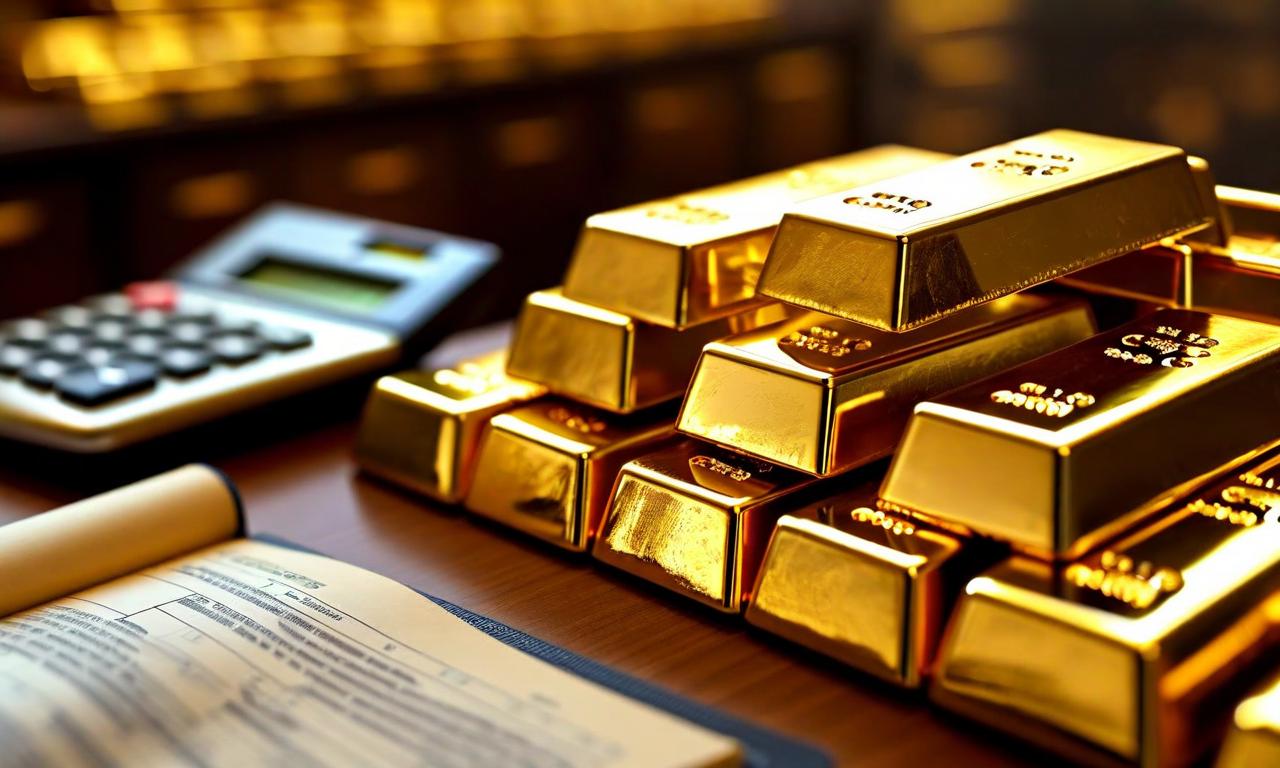Gold Hits Record High of Rs 1.09 Lakh Amid Plummeting Festive Demand and Investment Concerns
Gold prices have reached unprecedented levels globally, with MCX futures hitting Rs 1,09,000 per 10 grams and international spot gold reaching $3,646.53 per ounce. This surge has led to a 28% drop in gold demand during India's festive season. Consumers are adapting by shifting to lower karatage options and lightweight jewelry. The average purchase grammage has decreased, and retailers are experiencing mixed results. Investment concerns have been raised, with experts recommending alternatives like gold ETFs and sovereign gold bonds. Silver prices have also surged to $40 per ounce, driven by investment and industrial demand.

*this image is generated using AI for illustrative purposes only.
India's gold market is experiencing a complex scenario, with prices soaring to unprecedented levels while demand during the festive season sees a significant decline. This trend is mirrored in the global market, where gold prices have reached approximately $3,475.00 per ounce, approaching all-time highs.
Record-Breaking Prices
Gold October futures on MCX reached an all-time high of Rs 1,09,000.00 per 10 grams, driven by expectations of 75 basis points rate cuts by the US Fed. International spot gold also hit a record high of $3,646.53 per ounce. The rally was fueled by disappointing US job data showing only 22,000 non-farm jobs added versus 75,000 expected, and unemployment rising to 4.30%.
Global Demand Trends
Global gold jewellery demand fell 14% year-on-year in Q2 to near-pandemic lows. This decline is attributed to record investment inflows, a weaker US dollar, and investor preference for safe-haven assets. Gold-backed ETFs recorded net inflows exceeding 400 tonnes in the first half of the year, and central banks added 166 tonnes to reserves.
Festive Season Demand Decline in India
The price surge has had a profound impact on India's gold market during the first leg of the festive season, spanning from Raksha Bandhan to Onam. The India Bullion & Jewellers Association reported a 28% drop in gold demand to 50 tonnes, marking the steepest fall in three years.
Price Surge Impacts Buying Patterns
The primary factor behind this downturn is the substantial year-on-year price increase of 49%. Gold prices surged to Rs 1,07,321.00 per 10 grams, compared to last year's Onam price of Rs 74,500.00. This dramatic price hike has led to notable changes in consumer behavior:
- Shift towards lower karatage options
- Preference for lightweight jewelry
- Reduced average purchase grammage
Adapting to Market Changes
Retailers and consumers alike are adapting to the new market dynamics:
- Grammage Reduction: The average purchase grammage has decreased from 7-12 grams to 7-10 grams.
- Karatage Preferences: Lower karatage options such as 18K, 14K, and 9K gold have gained popularity.
- Lightweight Jewelry Boom: Sales of lighter-weight jewelry have grown 2.5 times compared to the previous year.
Mixed Results for Retailers
The impact of these changes varies among retailers:
| Retailer | Volume Change | Value Growth |
|---|---|---|
| Joy Alukkas | -15% | 25-30% |
| Malabar Gold | +5% | 27% |
Investment Concerns and Alternatives
Chartered accountant Nitin Kaushik has highlighted drawbacks of investing in gold jewellery, stating it could take 5-7 years just to break even. He explained that 24K gold (99.9% pure) qualifies as investment grade, while 22K gold contains only 91.6% gold. A 22K ornament worth Rs 50,000 contains approximately Rs 45,800 worth of actual gold.
Hidden costs include:
- Making charges ranging from 10-25%
- 3% GST
- Jewellers buying back ornaments below market rates
Kaushik presented data showing 10 grams of 24K gold increased from Rs 6,307 to Rs 78,245, delivering 13-14% CAGR. He recommended 24K bars, gold ETFs, gold SIPs and sovereign gold bonds as better investment alternatives.
Market Outlook and Price Projections
Despite the overall decline in jewelry demand, the market for gold coins, often purchased as investments, has remained stable. In India, investors are selling old gold jewellery to book profits with plans to repurchase if prices decline. The country expanded hallmarking standards to include 9-carat jewellery to provide more affordable options.
Silver has also seen significant movement, surging to $40.00 per ounce, its highest level in 13 years. This increase is driven by both investment and industrial demand from solar panels, electronics, and electric vehicles. Silver-backed ETFs saw record inflows of 95 million ounces in the first half of the year.
Axis MF Research projects gold prices to remain between $3,400.00-$3,600.00 per ounce and silver between $40.00-$42.00 per ounce for the remainder of the year. Analysts expect continued volatility with gold trading between $3,510.00-3,770.00 per ounce and silver between $39.10-44.00 per ounce.
Conclusion
As the festive season progresses, the gold industry faces a challenging landscape as it navigates through high prices, changing consumer preferences, and investment concerns. The shift towards lower karatage and lightweight options indicates consumers' attempts to balance their desire for gold with budget constraints. With India being the second-largest gold consumer globally, holding over 25,000 tonnes in household possession, it remains to be seen how these trends will evolve and whether the industry can find innovative ways to stimulate demand in this high-price environment.





























